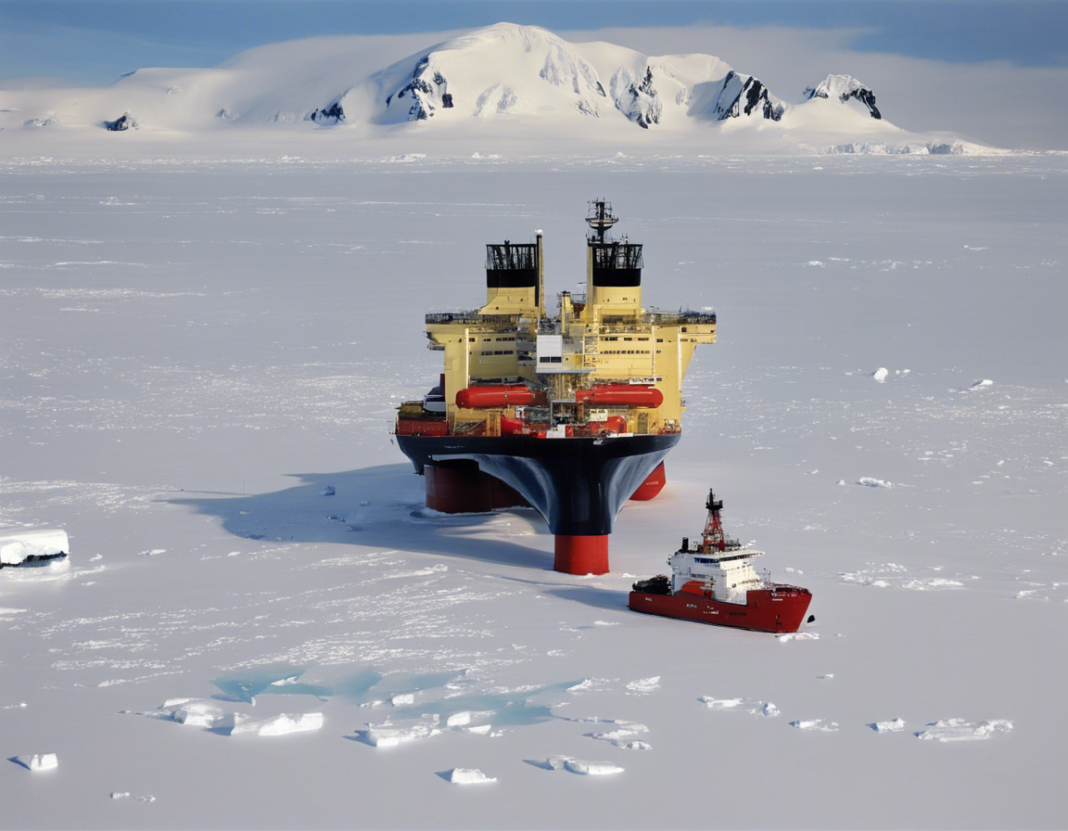Introduction
The British Antarctic Territory (BAT), a region that encompasses the Antarctic Peninsula and numerous islands, is a land of extremes. With its frigid temperatures, harsh winds, and vast ice sheets, the BAT might seem like an inhospitable place. However, beneath the ice and snow lies a potentially lucrative resource – oil. The prospect of extracting oil in this remote and environmentally sensitive region raises complex legal, geopolitical, and environmental questions. In this article, we will delve into the opportunities and challenges of exploring oil in the British Antarctic Territory.
Geopolitical Context
The BAT is a British Overseas Territory that is governed by the United Kingdom. However, the Antarctic Treaty System, which regulates human activity in the region, prohibits mineral extraction in Antarctica until at least 2048. This ban includes oil drilling. Nevertheless, some countries, including the UK, have asserted their right to explore oil in the region once the treaty’s restrictions expire.
The potential for oil in the BAT has attracted interest from oil companies and governments around the world. The region’s proximity to South America and the Southern Ocean makes it strategically valuable for countries seeking to secure energy resources. Moreover, the melting ice caps due to climate change have made the region more accessible for oil exploration.
Environmental Concerns
One of the primary concerns surrounding oil exploration in the BAT is the potential for environmental damage. The harsh climate and delicate ecosystems of the region make it particularly vulnerable to oil spills and pollution. The risk of accidents, such as oil rig blowouts or tanker leaks, could have catastrophic consequences for the local wildlife and marine life.
Furthermore, the extraction and burning of oil contribute to climate change, which is already having a significant impact on the Antarctic region. Increased temperatures are causing the ice sheets to melt at an accelerated pace, threatening sea levels and biodiversity. The irony of exploiting oil in the Antarctic, a region that is on the frontline of climate change, has not been lost on environmentalists and indigenous communities.
Technological Challenges
Extracting oil in the BAT presents unique technological challenges. The extreme cold, remote location, and ice cover require specialized equipment and expertise. Oil companies would need to develop innovative techniques to drill safely in icy waters and transport oil across vast distances. The risk of equipment failure in such unforgiving conditions is high, making the prospect of oil exploration in the BAT a risky proposition.
Legal and Ethical Considerations
The legal framework governing oil exploration in the BAT is complex. The Antarctic Treaty System, which includes the Antarctic Treaty and the Protocol on Environmental Protection, prohibits mineral extraction in the region. However, the treaty’s restrictions are only in place until 2048, after which countries may pursue oil exploration in the region.
From an ethical standpoint, many argue that the pristine and fragile environment of the Antarctic should be off-limits to oil drilling. The region is home to unique species, such as penguins and whales, that could be devastated by an oil spill. Indigenous communities, such as the Inuit and the Sámi, have also voiced concerns about the potential impact of oil exploration on their traditional ways of life.
The Future of Oil Exploration in the BAT
The debate over oil exploration in the British Antarctic Territory is far from over. As the effects of climate change become more pronounced and energy demands continue to rise, the temptation to exploit the region’s oil reserves will only grow stronger. It is essential for policymakers, environmentalists, and industry stakeholders to engage in a dialogue about the risks and benefits of oil exploration in the BAT.
FAQs
1. Can oil be extracted in the British Antarctic Territory currently?
No, the Antarctic Treaty System prohibits mineral extraction, including oil drilling, until at least 2048.
2. What are the environmental risks of oil exploration in the BAT?
Oil spills, pollution, and climate change are some of the primary environmental risks associated with oil exploration in the British Antarctic Territory.
3. What challenges do oil companies face in extracting oil in the BAT?
Technological challenges, such as extreme cold, remote location, and ice cover, pose significant obstacles to oil exploration in the British Antarctic Territory.
4. What is the legal framework governing oil exploration in the British Antarctic Territory?
The Antarctic Treaty System prohibits mineral extraction in the region until 2048, after which countries may pursue oil exploration.
5. What are the ethical considerations of oil exploration in the BAT?
Many argue that the pristine and fragile environment of the Antarctic should be protected from oil drilling to preserve biodiversity and indigenous communities.
Conclusion
Exploring oil in the British Antarctic Territory is a complex and multifaceted issue that touches upon geopolitics, the environment, technology, law, and ethics. While the lure of oil reserves in the region is undeniable, the potential consequences of extraction must be carefully weighed against the risks. As we look to the future, it is crucial to consider the long-term sustainability and well-being of the Antarctic and its inhabitants in any decision regarding oil exploration in the region.









